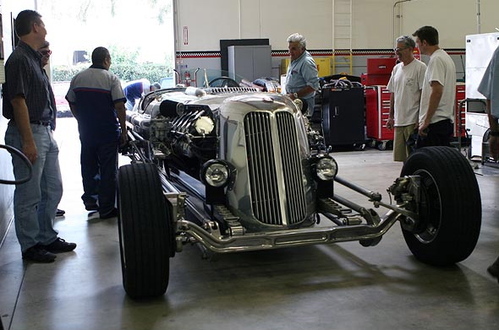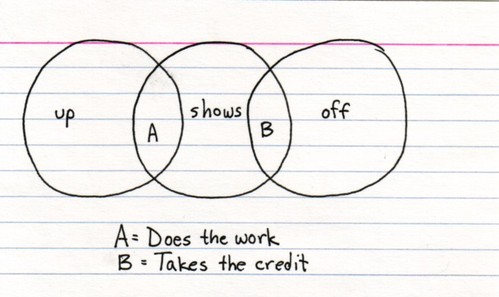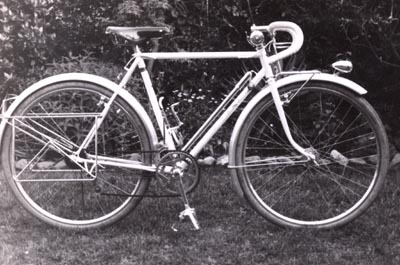
Here’s a Director’s Commentary which is all about ingenuity. My previous Director’s Commentary pointers about the Honda Ridgeline and the Nintendo Wii have been built around the theme of being human-centered in one’s design process; this one is all about engineering a unique solution for a single human and his singular pursuit of gearhead gnarlyness. That human goes by the name of Jay Leno. Simply put, he has a custom hot rod powered by a vintage tank motor.
A tank motor! If you’re like me, you have no idea of the operating parameters of a tank motor. Well, here they are:
- weight: 2000 pounds
- swept volume: 1,790 cubic inches
- number of cylinders: 12
- power: 810 hp
- torque: 1,560 lb-ft
That, my friends, is a one huge motor. It’s designed to accelerate heavy things quickly. But any hot rodder, particularly one like Jay Leno with some discretionary income, just can’t leave well enough alone. So he took his tank car to the legendary Gale Banks and asked him to double the horsepower. DOUBLE THE HORSEPOWER. As in, 1,600 horsepower. Which is roughly equivalent to four Corvettes or six Camrys (yes, we live in the age of the overpowered Camry. I have a rant to write about this, but that’s for another day).
This Director’s Commentary, then, is about the ingenuity and workmanship that goes into pulling off something extremely tricky from a technical standpoint. It comes in four parts with lots of great illustrations and stories (look for the one involving Colin Powell), and is full of interesting passages, such as:
The AV 1790 V12 has a long rotating shaft
across the front of the engine to link the carburetor throttles
together. We’ll fabricate new throttle pull-rods to utilize the
original cross-shaft. In this photo the two right bank magneto covers
(there are four magnetos) have been removed. Although we could have
converted the engine to electronic ignition, Gale wanted to retain the
magnetos to maintain the period look.
Yes, I realize that this particular edition of Director’s Commentary probably doesn’t have the wide design thinking appeal of some of the earlier episodes. But even if you don’t enjoy the technical virtuosity at work here, I’d encourage you to peruse the four episodes. Perhaps they’ll help you better understand why people like me find this stuff so interesting. If you happen to work with, or manage, or lead people who like gearheady content, it may help you gain insight in to ways to help those people be happy and innovative. And embedded here too, unfortunately, is a lot of the human wiring which makes some us buy Hummer H2’s when what we really needed was a minivan. Or perhaps even just a Camry. So much of why we pursue technological wizardry, whether it be of silicon or aluminum or clever bits and bytes, is driven by emotional and our irrational inner dialogs. If we’re going to get better at designing systemic solutions to address climate change and other broad issues facing our societies, we need to really understand what drives people to create 1,600 horsepower hot rods.
And overpowered Camrys.





